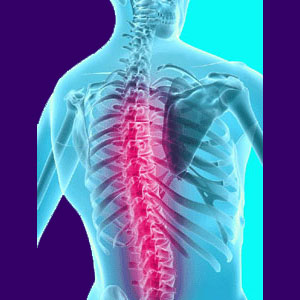
Spinal cord compression describes structural impingement on one of the most important structures in the central nervous system. When the spinal cord is compressed, neurological signals can not pass normally between the brain and the rest of the anatomy. The consequences of cord compression can be devastating.
Spinal stenosis can compress the spinal cord in both permanent and transient ways. Most cases of spinal cord impingement occur in the neck, although cauda equina compression within the central canal is even more prevalent in the lower lumbar spine and can enact similarly horrific symptoms.
This essay explores the causes, symptoms and treatments of spinal cord compression due to central spinal stenosis and other circumstances. We will make every effort to help affected patients to make better informed decisions when it comes the choosing the best treatment when faced with such a serious diagnosis.
Causes of Spinal Cord Compression
There are many possible causes of spinal stenosis and some specific causes to cervical spinal stenosis, which is the most common variety to compress the spinal cord. Often, it is actually a combination of factors that leads to spinal cord impingement due to an accumulation of structural changes in the greater spinal anatomy, reducing the patency of the central vertebral canal.
Disc desiccation and degeneration are universal, as are general osteoarthritic changes in the vertebral column. Herniated discs are extremely commonplace, as are changes to the lordosis and kyphosis of the spine. Less commonly, other types of structural issues can also contribute to spinal stenosis, including scoliosis, spondylolisthesis and other diagnoses.
Although the central vertebral canal is large, it can be diminished by all of these age and activity-related structural changes, causing the cord to suffer a progressive compression that can threaten its functional viability and even potentially lead to temporary or permanent spinal cord injury.
Traumatic injury can cause acute cord compression in people who otherwise would not experience it, including those with no history of central spinal stenosis. Of course, people with existing stenosis have a greater chance of suffering cord compression when trauma is added to the mix of contributing factors.
Symptoms of Cord Compression
Spinal cord compression can create variable symptomology depending on its location and severity. Minor or transient compression might produce short lasting symptoms, while persistent compression will usually produce lasting, chronic expressions in affected areas of the body. Most cases will involve static location symptoms, while a minority of cases may involve symptoms which change in location. Common expressions of spinal cord compression include all of the following possible symptoms:
Pain might exist locally or in virtually any area of the body below the affected spinal level. Likewise, the patient may express other neurological symptoms like tingling, numbness or burning locally, as well as in affected locations of the anatomy from the compressed level downwards.
In rare instances, cord compression can also produce symptoms above the affected levels, such as in the case of cervicogenic headaches that might appear at the occipal area.
The patient may express functional weakness or disability in virtually any area of the body below the affected spinal cord level.
Internal bodily systems and organs might suffer impairment. Some patients will express these issues with sexual dysfunction, constipation or incontinence.
Some patients will suffer partial or complete paralysis due to dire spinal cord compression.
Treatment for Spinal Cord Compression
Any degree of spinal cord compression is justified in necessitating treatment, since no case is considered insignificant due to its severe symptomatic potential. In virtually all cases, therapy will be surgical in nature and might be performed on an immediate emergency basis for acute presentation involving significant expressions, such as incontinence or paralysis.
The specific form of spinal stenosis surgery to be performed will depend on the exact parameters of each patient’s profile, including the cause of compression, onset circumstances or current symptomology. The majority of patients will require surgical decompression of the central canal space using a combination of laminectomy, discectomy and/or corpectomy. Some patients will be indicated for spinal implant insertion, such as the Coflex or X-Stop. Some patients may require considerable post-decompression reconstruction of the vertebral column, including application of spinal fusion, also known as spondylodesis.
In cases of minor and potentially transient cord compression, patients might be treated conservatively in the hope that the condition might rectify itself, such as in the case of some disc-related symptomology. This care might range from nonsurgical spinal decompression to symptomatic treatment to traction or bed rest. Caution is advised in these cases, as the longer compression occurs, the greater its chances to enact permanent symptomology even after the spinal cord is decompressed.





